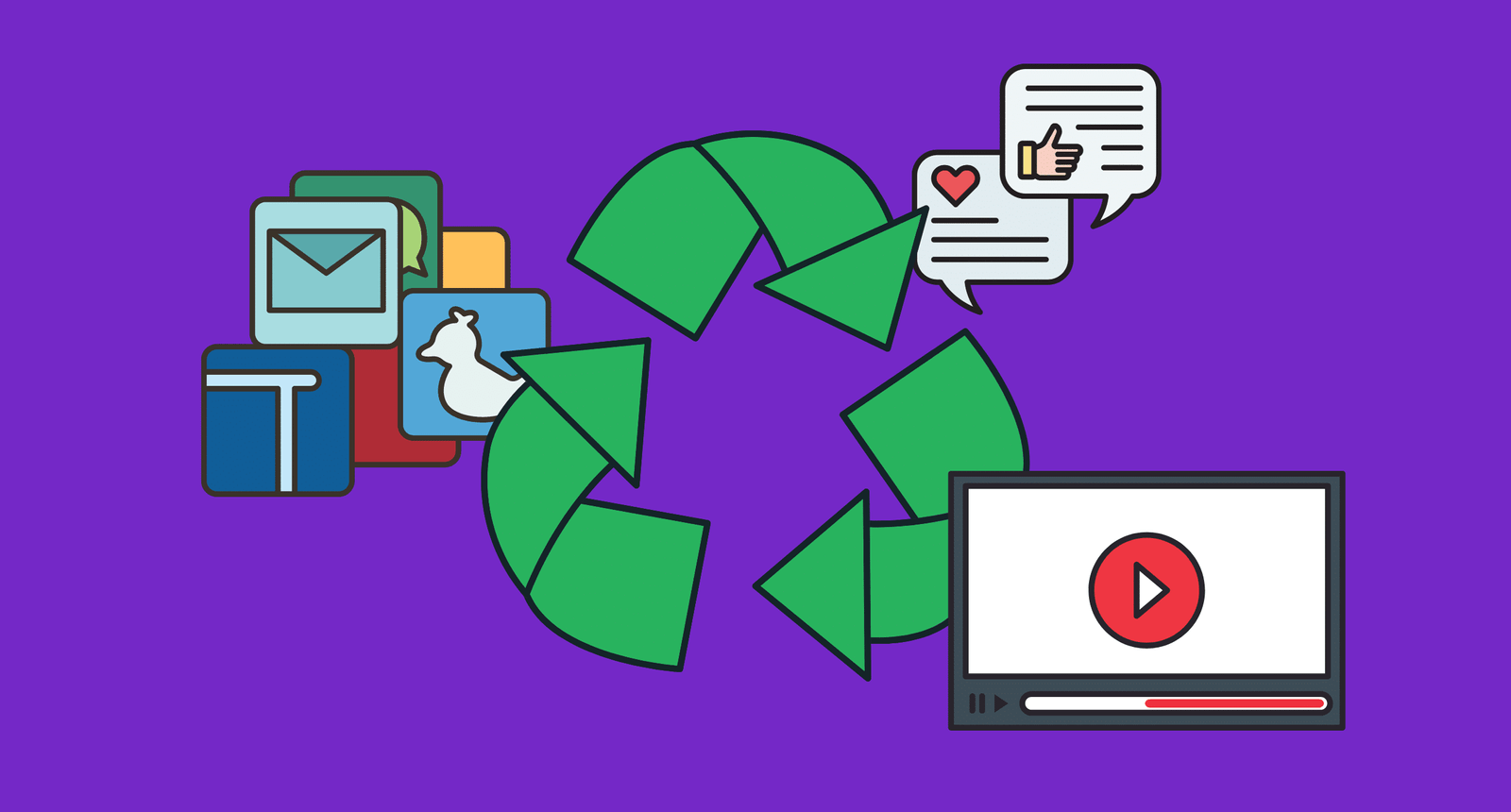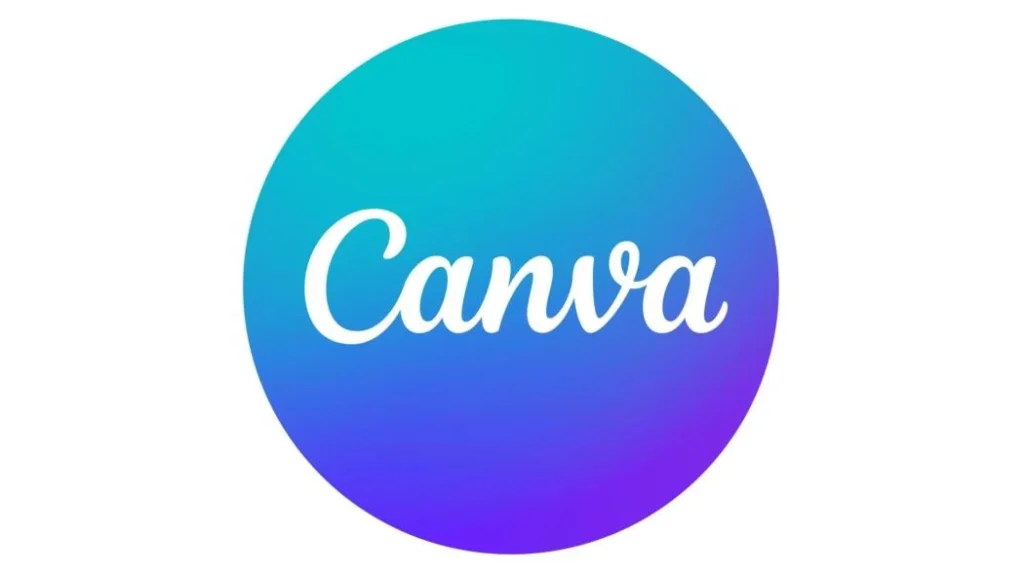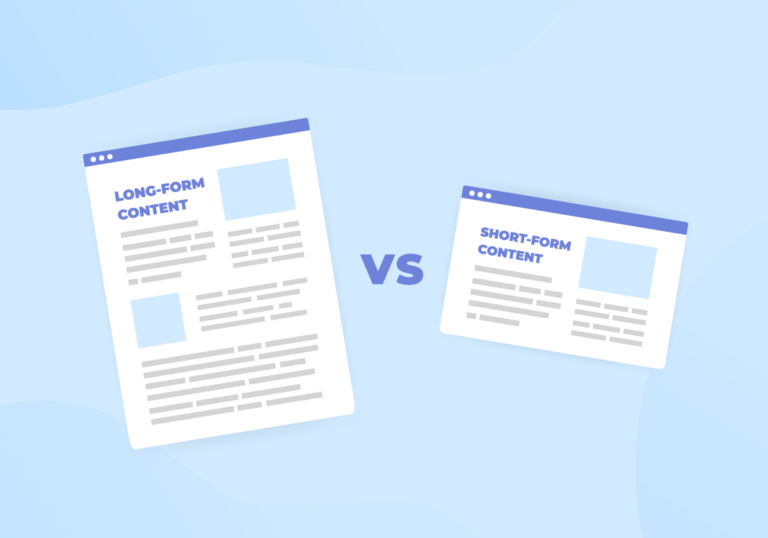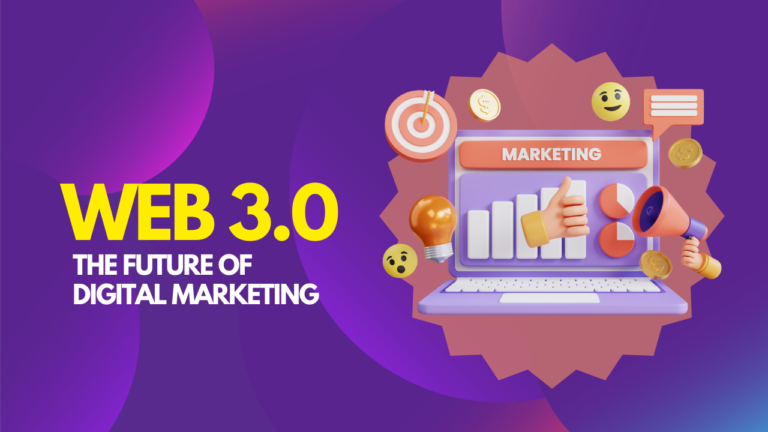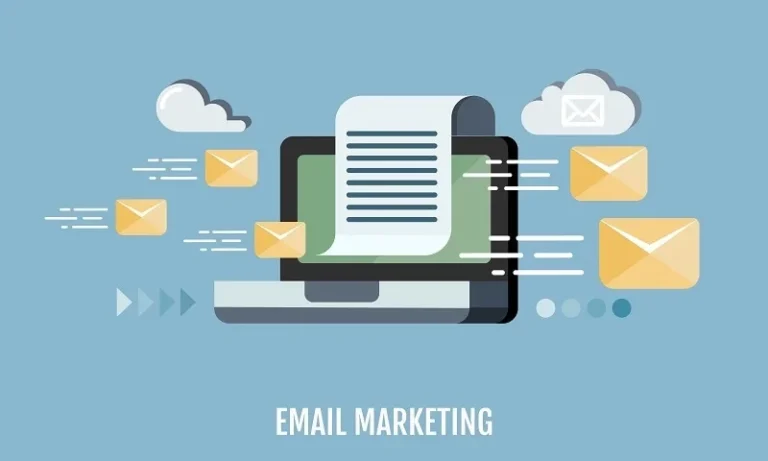Content Repurposing Made Simple: Turn 1 Piece of Content into 10!
Creating content takes time, energy, and creativity. But how often does that hard work go unnoticed after a week or two? Too many creators and marketers put their heart into a single piece of content, only to see it fade into obscurity.
This is where content repurposing comes in. Instead of starting from scratch each time, you can transform your existing content into multiple formats. Think of it as giving your content a second (or third!) life, reaching a new audience while saving valuable time.
Not only does content repurposing amplify your message, but it also boosts your SEO. By targeting more platforms and adapting to different formats, you increase your chances of being discovered on search engines and across social channels.

Social Champ
In this guide to why content repurposing is a must, we’ll show you step-by-step how to:
- Turn one blog post into multiple formats.
- Adapt content for social media platforms like Instagram, LinkedIn, and TikTok.
- Build a smart repurposing strategy that saves time and drives results.
Let’s dive in and explore how to make every piece of content work harder for you!
What is Content Repurposing?
Content repurposing is the process of taking an existing piece of content and transforming it into different formats to reach new audiences and maximize its value. Instead of creating something entirely new, you adapt your content to suit multiple platforms or cater to varied audience preferences.
Think of it like recycling, but for your content. For example, a blog post can become a series of social media posts, a video, an infographic, or even an email newsletter. This approach allows you to stretch the life of your content and make it work harder for you.
Why Content Repurposing is a Must?
- Increases Reach: People consume content differently across social media platforms and channels. Repurposing helps you reach your target audience wherever they are.
- Saves Time: Instead of starting from scratch, you’re building off of the time and effort you’ve already put into creating quality content.
- Boosts SEO: More formats mean more opportunities to rank in search engines and create valuable backlinks to the original content.
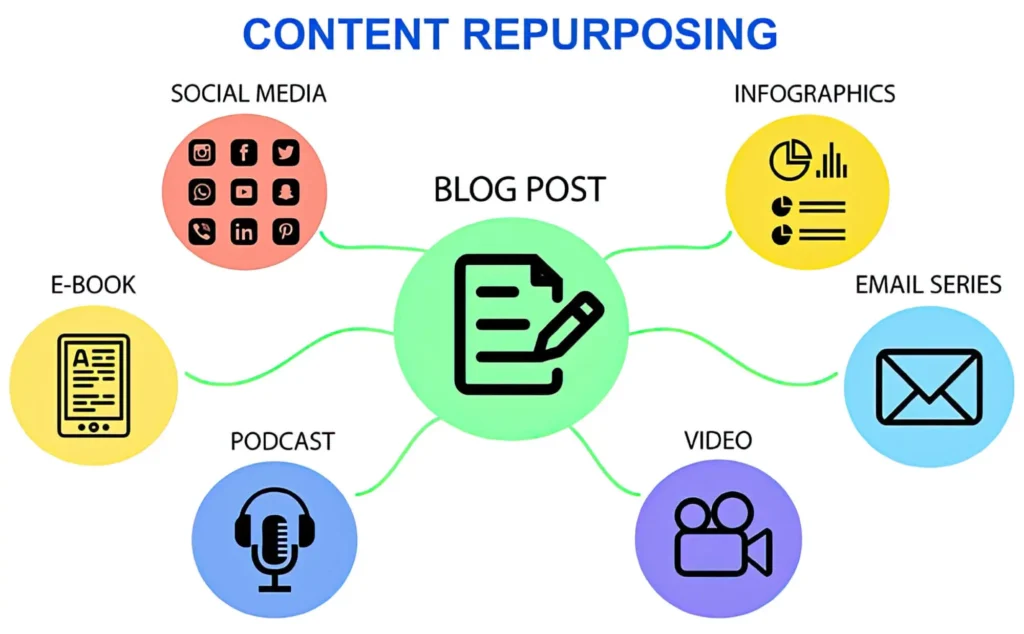
Example of Content Repurposing in Action
Imagine you’ve created a high-quality blog post about “10 Ways to Improve Your Content Marketing.” Here’s how you could repurpose it:
- Break each of the 10 tips into separate social media posts for LinkedIn or Twitter.
- Create an infographic summarizing all 10 tips for Instagram or Pinterest.
- Film a short video explaining three of the tips for YouTube or TikTok.
- Use it as the basis for a webinar or live Q&A session.
In short: Content repurposing ensures that your hard work doesn’t go to waste, giving your audience more ways to engage with your message.
The Benefits of Repurposing Content: Why It’s a Game-Changer
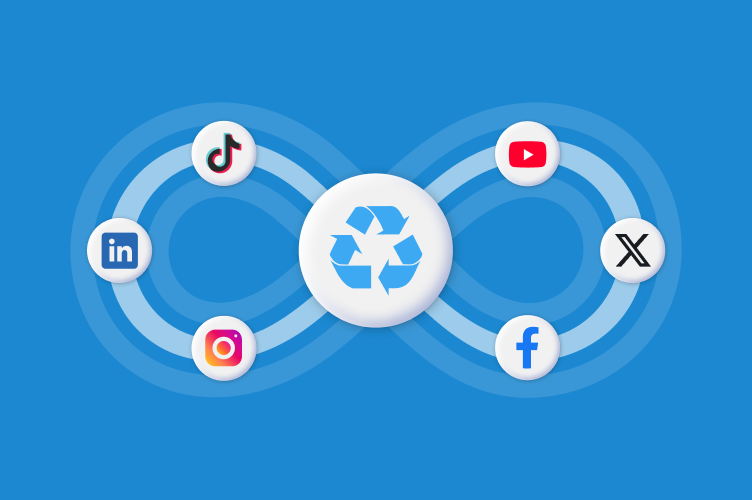
Repurposing Content to Maximize ROI
When you create a single piece of content, you’re investing time, resources, and effort. But what if that investment could pay off multiple times? This is the beauty of content repurposing, it takes what you’ve already created and adapts it to reach a broader audience on multiple platforms.
Here’s why a solid repurposing strategy is essential:
- Save Time and Energy
Instead of constantly creating new content, focus on adapting what you’ve already made. For example, a long-form blog post can be repurposed into several social media posts, a short video, and even an infographic. - Boost SEO
Every time you repurpose content, you increase your chances of being found in search engines. By targeting secondary keywords and linking your repurposed content back to the original, you improve your site’s visibility and authority. - Reach New Audiences
Different people consume content in different ways. While some prefer reading blogs, others are drawn to visuals or short videos. By adapting your content into various formats, you meet your target audience where they’re most active—whether that’s LinkedIn, Instagram, or YouTube. - Maximize Your Content’s Lifespan
Instead of letting your high-performing content gather dust, keep it alive by reusing it across social media channels or as part of your email marketing campaigns.
Example: Let’s say you’ve written a blog on “5 Tips for Social Media Marketing.” You could break each tip into a separate social media post, create an infographic highlighting all five tips, and film a short video diving deeper into one of them.
Repurposing isn’t just about convenience, it’s about working smarter. With a little creativity, your old content can become fresh, relevant, and impactful all over again.
Step-by-Step: How to Turn One Piece of Content into 10 Formats
Every great content repurposing strategy begins with identifying the right piece of content to transform. Start with your high-performing content—a blog post, video, or webinar that has already proven to engage your audience.
Once you’ve chosen your starting point, here’s how to break it down into multiple formats:
Step 1: Extract the Key Insights
Scan your existing content and pull out the most valuable points. These might include:
- A list of actionable tips.
- Interesting statistics or data points.
- Key quotes or takeaways that resonate with your audience.
Pro Tip: Highlight sections of the content that could stand alone as bite-sized pieces for social media posts or visuals.
Step 2: Adapt for Different Platforms
Now that you’ve identified the key points, it’s time to repurpose your content into multiple formats tailored to various social media platforms and content channels.
Here’s how:
- Blog Posts: Break a long-form blog into shorter posts for LinkedIn or Twitter. Each post can focus on a specific tip or section.
- Video Content: Record a short explainer video or a tutorial summarizing the blog’s key points. Tools like Loom or Canva can help you create engaging visuals.
- Infographics: Turn data or lists into a visually appealing infographic for Pinterest or Instagram.
- Social Media Posts: Create carousels, Reels, or Stories for Instagram, and use Twitter threads to share step-by-step processes.
- Email Newsletters: Summarize your content in an email to engage your subscribers. Add links to the full blog for additional traffic.
Example: A blog on “5 Ways to Improve SEO” could turn into:
- Five individual LinkedIn posts.
- A short TikTok video sharing one tip.
- An infographic summarizing all five points for Instagram.
Step 3: Build a Workflow for Repurposing
Creating repurposed content is easier with a system in place. Follow this workflow to keep things organized:
- Choose a Content Piece: Start with something evergreen or high-performing.
- Plan Formats: Decide on the content types you’ll create (e.g., video, infographic, email).
- Schedule Distribution: Map out when and where you’ll post each format. Tools like Hootsuite or Buffer can help automate the process.
- Track Performance: Monitor how each format performs and optimize future content based on what works best.
By following this step-by-step approach, you’re ensuring that every piece of content you create has maximum impact. Not only will this save you time, but it will also make your content more accessible to a new audience across multiple channels.
Repurposing Content for Social Media Platforms
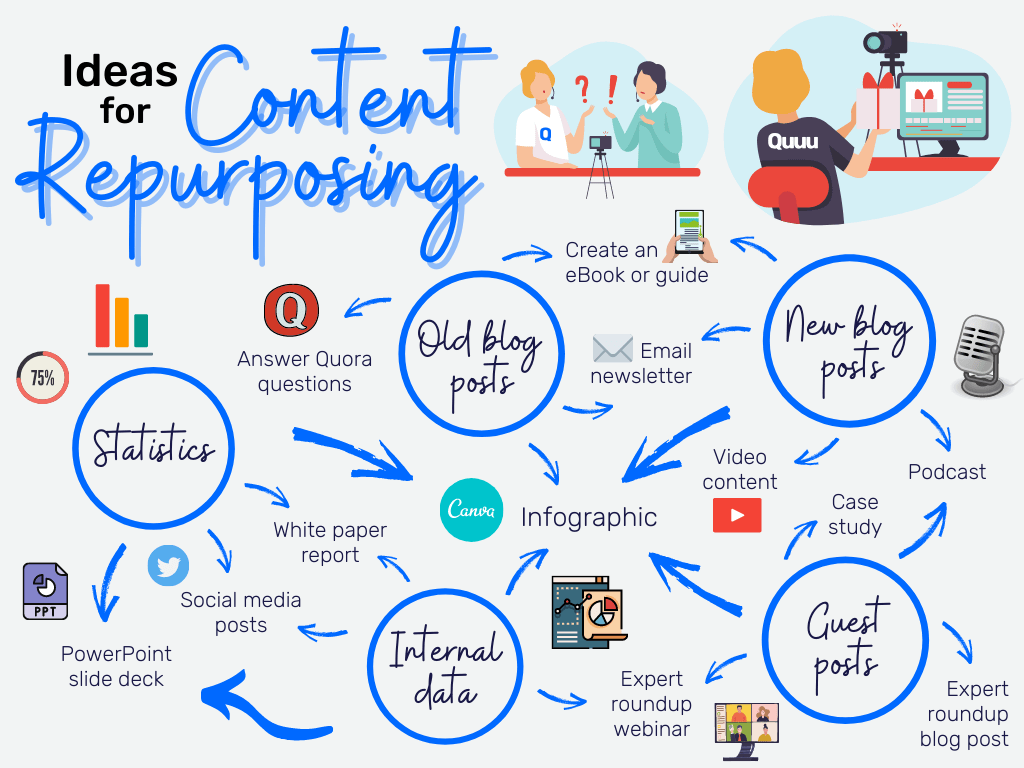
ColorWhistle
Social media is one of the easiest and most effective ways to share repurposed content. Each platform caters to different types of audiences, so adapting your existing content allows you to reach your audience wherever they’re most active.
Let’s break down how to tailor your content repurposing strategy for some of the most popular social media platforms.
LinkedIn: Professional & Insight-Driven
LinkedIn is ideal for repurposing written content like blogs or case studies. The audience here values professional insights and actionable advice.
How to Repurpose for LinkedIn:
- Break a blog into several smaller posts, each focused on one key takeaway.
- Create a carousel summarizing the blog’s main points. Use a tool like Canva for visually engaging slides.
- Share a snippet or quote from the content with a link to the full article.
Example: A blog on “5 Content Marketing Trends” can become five individual LinkedIn posts, each highlighting one trend with actionable advice.
Instagram: Visual and Bite-Sized
On Instagram, visual content is king. Infographics, carousels, Reels, and Stories work best here.
How to Repurpose for Instagram:
- Create an infographic summarizing your blog or video.
- Use Reels or Stories to share quick tips or insights from the content.
- Turn quotes or stats into aesthetically pleasing posts with bold text and clean visuals.
Example: If your original blog discusses “SEO Tips,” make an infographic titled “3 SEO Hacks You Need to Know” for Instagram.
Twitter: Short & Snappy
Twitter thrives on short, concise messages. It’s great for repurposing high-performing content into bite-sized nuggets.
How to Repurpose for Twitter:
- Break down your blog into a tweet thread.
- Share quotes, stats, or quick tips as single tweets.
- Link back to your original content with a strong call-to-action.
Example: A blog titled “How to Boost SEO” can turn into a 5-tweet thread:
- Tweet 1: “Want to boost your SEO? Let’s talk about 5 easy strategies 🧵”
- Tweets 2–5: Share one tip per tweet with engaging visuals or hashtags.
TikTok and YouTube Shorts: Engaging Video Content
Short-form videos are highly effective for capturing attention. If your repurposing strategy includes video, these platforms are must-haves.
How to Repurpose for TikTok/YouTube Shorts:
- Record yourself explaining a key takeaway from your blog or webinar.
- Use captions and graphics to make the video engaging and accessible.
- Keep it short and punchy—under 60 seconds works best.
Example: A blog post on “Email Marketing Tips” can be turned into a quick video: “Here are 3 ways to boost your email open rates this week!”
Facebook: Versatile and Shareable
Facebook is a mix of professional and casual content, making it versatile for repurposing old content.
How to Repurpose for Facebook:
- Share your blog post with a compelling caption and an eye-catching image.
- Post a short video summarizing your content.
- Use Facebook Stories for quick, interactive updates.
Example: Post a link to your blog with a caption like: “Want to learn how to make your content work harder for you? Check out our latest guide to content repurposing!”
General Tips for Repurposing Content on Social Media
- Keep it platform-specific: Adapt content to match the tone, format, and audience of each social media platform.
- Add visual elements: Photos, infographics, and videos are more likely to grab attention than plain text.
- Use a consistent call-to-action: Direct your audience back to the original content or encourage engagement through comments, shares, or clicks.
Tailoring your repurposed content to each social media platform, you can ensure it reaches the right audience in the right format. Not only does this boost engagement, but it also extends the lifespan of your existing content.
How Repurposing Content Boosts SEO
One of the biggest advantages of content repurposing is how it supports your SEO strategy. By creating multiple formats from a single piece of content, you’re increasing your chances of ranking higher on search engines and driving more traffic to your website.
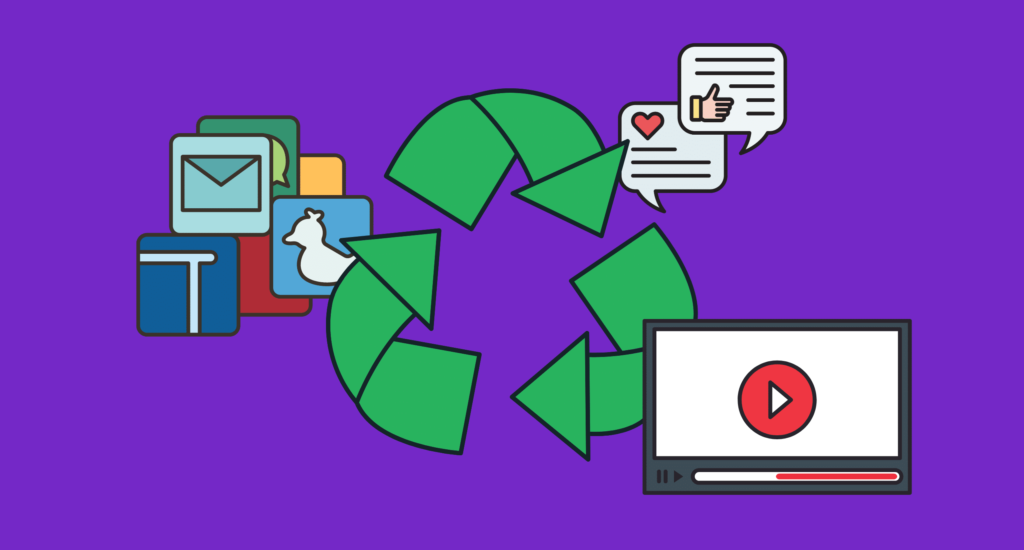
Bramework
Here’s how repurposing content aligns with semantic SEO:
1. Expands Your Keyword Reach
Every time you repurpose, you create an opportunity to target additional keywords that are semantically related to your original topic. For example:
- A blog post optimized for “content repurposing” might also cover terms like “repurposing content for social media” or “ways to repurpose content.”
- Videos or infographics can target visual and voice search queries, like “how to repurpose content for Instagram.”
Pro Tip: Use tools like Ahrefs or SEMrush to find LSI keywords (Latent Semantic Indexing) to include in each content format.
2. Builds a Content Cluster
Repurposing helps you create a content cluster, which is a collection of related pieces linked together around a central topic. This strategy strengthens your site’s authority and helps search engines understand the depth of your expertise.
How to Create a Content Cluster with Repurposed Content:
- Start with a “pillar” blog post as the foundation.
- Repurpose it into smaller formats, like infographics, videos, or social media posts.
- Link all the repurposed content back to the original blog and vice versa.
Example: A blog post titled “The Ultimate Guide to Repurposing Content” could be the center of a cluster that includes LinkedIn posts, videos, and an email newsletter—all linking back to the blog.
3. Improves Internal Linking
When you create multiple pieces of content around the same topic, you have more opportunities for internal linking. Internal links improve user navigation and help search engines discover your content library.
Best Practices for Internal Linking in Repurposed Content:
- Use relevant anchor text that matches the keywords you’re targeting (e.g., “Learn more about repurposing your content”).
- Link each repurposed piece to both the pillar content and other related posts or pages on your site.
4. Boosts Dwell Time and Engagement
Repurposed content that links back to your website encourages visitors to stay longer, especially if it provides value in multiple formats. For example:
- A LinkedIn post could drive traffic to your blog.
- An infographic on Instagram could link to a full video tutorial on YouTube.
- A short video could direct viewers to sign up for a webinar or download an eBook.
The more ways you can engage your audience, the higher your site’s engagement metrics—a signal that improves rankings on search engines.
5. Targets Different Search Queries
People search differently depending on their intent. By repurposing into different formats, you can target:
- Informational Queries: Blog posts, infographics, and videos can answer questions like “What is content repurposing?”
- Transactional Queries: Lead forms or email campaigns tied to repurposed content can guide users to sign up for your services.
A well-executed repurposing strategy is a natural fit for semantic SEO. By diversifying your content and interlinking related pieces, you can build authority, attract new audiences, and improve your site’s overall performance in search engines.
Tools and Tips for Effortless Content Repurposing
Using the right tools makes the process of repurposing content faster, easier, and more effective. Here’s a list of must-haves to help you transform your existing content into fresh formats:
Canva
- Perfect for creating infographics, carousel posts, and visually appealing social media content.
- Use pre-designed templates to turn key insights from blogs into shareable graphics for Instagram, Pinterest, or LinkedIn.
Example: Repurpose a blog about “SEO Tips” into a carousel post with Canva, showcasing one tip per slide.
Loom
- An easy-to-use tool for recording short videos or tutorials.
- Great for turning blog summaries into video content for platforms like YouTube or TikTok.
Example: Record a quick 3-minute video explaining a key point from a webinar or blog.
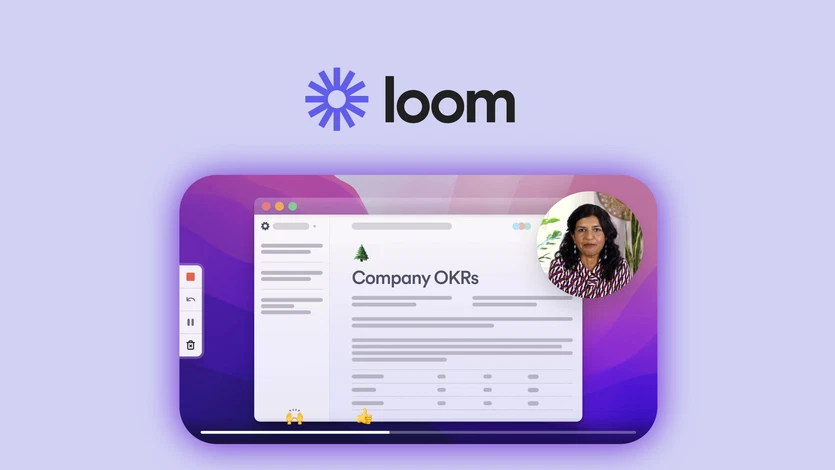
Hootsuite or Buffer
- Automate the scheduling and posting of your repurposed content across multiple social media platforms.
- Helps you stay consistent and organized with your posting schedule.
Tip: Schedule Instagram posts, LinkedIn updates, and Twitter threads all in one place.

Otter.ai
- Transcribe podcasts, webinars, or videos into text.
- Use these transcripts as a foundation for written content like blog posts or newsletters.
Example: Convert a recorded webinar into a full blog post or an email series.

Repurpose.io
- A tool designed specifically for automating content repurposing.
- Automatically convert live streams or videos into podcasts, social media snippets, or other formats.
Example: Turn a YouTube video into Instagram Reels or TikToks with minimal effort.
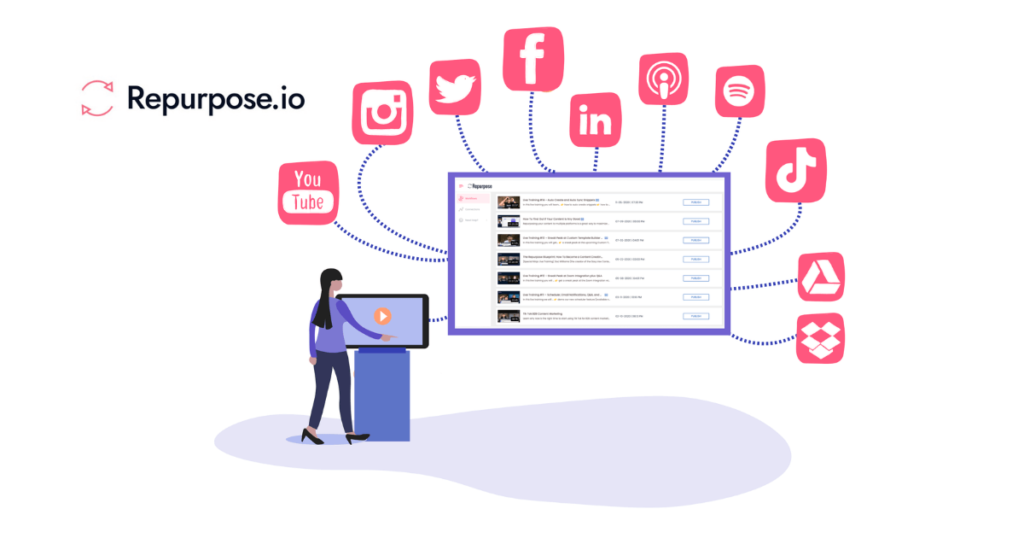
Practical Tips for Repurposing High-Quality Content
- Focus on Evergreen Content
Start with content that stays relevant over time, like tutorials, how-tos, or industry insights. Evergreen content types provide long-term value and are easier to reuse. - Tailor Content for Each Platform
Don’t just copy and paste. Adapt your repurposed content to match the tone, format, and audience of each social media platform. - Prioritize High-Performing Content
Use analytics tools like Google Analytics or social media insights to identify what resonates most with your audience. Start repurposing your best-performing blog posts, videos, or social updates. - Repurpose in Batches
Set aside time to repurpose content in bulk. For example, take one blog post and turn it into several social media posts, a video, and an infographic all at once.
Repurposing Workflow to Save Time
Here’s a simple workflow to make your repurposing strategy efficient:
- Pick a Content Piece: Choose an existing piece of content, like a blog post or webinar.
- List Formats: Decide on 3–5 new formats to create (e.g., infographic, video, email).
- Create Assets: Use tools like Canva, Loom, or Otter.ai to produce each format.
- Distribute: Schedule and post the repurposed content on relevant social media platforms.
- Analyze Results: Track performance metrics like engagement, traffic, and conversions to see what works best.
Repurposing doesn’t have to be overwhelming. With the right tools and a streamlined repurposing strategy, you can easily transform your content creation process into a well-oiled machine.
How to Repurpose a Single Blog into Multiple Content Formats
Let’s take an example of a blog post titled: “10 Ways to Boost Your SEO in 2025.” This is a classic example of a high-performing content piece with plenty of opportunities for repurposing content into fresh, engaging formats.
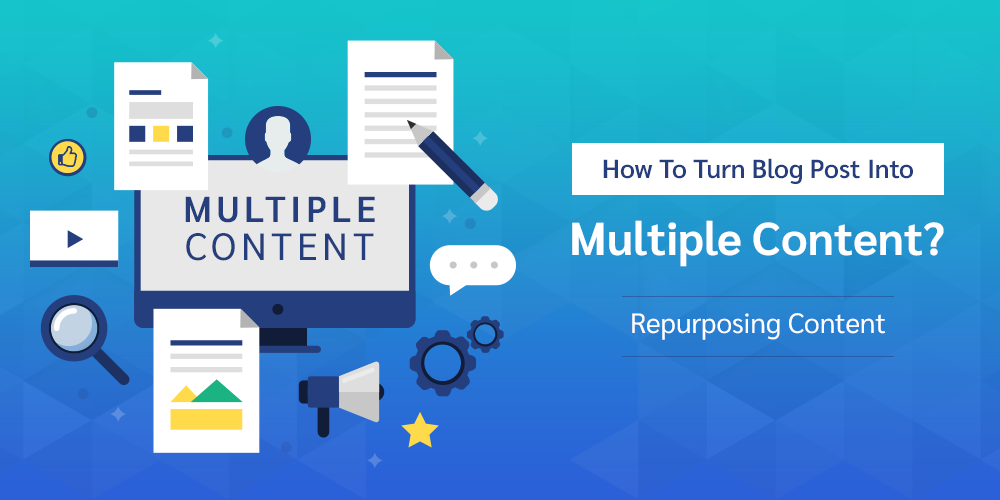
Blog Designer
Here’s how you can turn this piece of content into 10 different assets:
1. LinkedIn Posts
Break down each of the 10 tips into separate LinkedIn posts. Each post can:
- Highlight one tip.
- Include a relevant stat or actionable advice.
- End with a CTA like: “Want more tips? Check out the full guide here [link]!”
Result: 10 LinkedIn posts over two weeks.
2. Instagram Carousels
Create a visually engaging carousel summarizing all 10 tips. Use Canva to design slides with clear headers, short text, and relevant icons or images.
Result: A shareable Instagram post with high engagement potential.
3. Infographic
Turn the blog post into a single infographic showcasing the 10 tips. This works well for platforms like Pinterest or LinkedIn and can also be embedded back into the original blog to enhance its SEO value.
Result: A visually appealing piece of repurposed content that can reach new audiences.
4. Short Video (Reels, TikToks, or Shorts)
Record a short 60-second video summarizing three key tips from the blog.
- Add captions for accessibility.
- Use a conversational tone to connect with your audience.
Result: A short-form video for Instagram Reels, TikTok, or YouTube Shorts.
5. Twitter Thread
Transform the blog into a Twitter thread, with each tweet representing one tip. End the thread with a link to the full blog post for readers who want more details.
Result: A concise and engaging Twitter thread driving blog traffic.
6. Email Newsletter
Write an email highlighting 3–5 of the tips as a teaser and encourage subscribers to read the full blog post for the complete list.
Result: A personalized touchpoint that keeps your email list engaged.
7. Webinar or Q&A Session
Use the blog as the foundation for a live webinar or a recorded Q&A session about SEO strategies.
- Share the recording later as video content on platforms like YouTube.
Result: An interactive way to connect with your audience and generate long-form content.
8. Slide Deck for Presentations
Condense the blog into a PowerPoint or Google Slides presentation. This is perfect for LinkedIn carousels or sharing during live events.
Result: A professional, shareable asset for presentations or SlideShare.
9. Podcast or Audio Clip
Turn the blog into an audio clip or podcast episode by recording yourself discussing the 10 tips. This is great for audiences who prefer listening over reading.
Result: An engaging podcast episode for platforms like Spotify.
10. Evergreen Content Updates
Revisit the blog after a few months and update it with fresh stats or additional insights. Re-share it across all your social media channels to extend its lifespan.
Result: A refreshed piece of content that stays relevant and keeps driving traffic.
A Workflow Example
Here’s how you could structure the timeline:
- Week 1: Publish and promote the original blog post.
- Week 2: Share LinkedIn posts and Twitter threads.
- Week 3: Publish the infographic and Instagram carousel.
- Week 4: Record the video and podcast episode.
By repurposing, a single long-form piece of content can turn into a wide-reaching campaign. Not only does this save time, but it also ensures your audience encounters your message in the format they prefer.
How to Measure Success with Repurposed Content
Creating and distributing repurposed content is only part of the process. To truly make your repurposing strategy effective, you need to track how well your content performs across different formats and platforms. This data will help you understand what works, optimize future efforts, and maximize your ROI.

Here’s how to measure the success of your content repurposing strategy.
1. Key Metrics to Track
Different types of repurposed content require different metrics. Here’s what to look for:
- Blog Posts:
- Traffic: Use Google Analytics to track visits to the original blog post and repurposed blogs.
- Bounce Rate: See how engaged readers are. Lower bounce rates mean higher relevance.
- Social Media Posts:
- Engagement: Track likes, comments, shares, and clicks on your social media posts.
- Impressions: Measure how many people saw your post.
- Videos (YouTube, TikTok, Instagram):
- Views: How many times has your video been played?
- Watch Time: Are viewers watching the entire video or dropping off early?
- Infographics:
- Shares: Infographics often go viral on platforms like Pinterest and Instagram.
- Backlinks: Check if others are linking back to your infographic, boosting SEO.
- Email Campaigns:
- Open Rates: Are subscribers opening emails featuring your repurposed content?
- Click-Through Rates: Are they clicking the links to your blog, video, or infographic?
2. Tools to Analyze Performance
Use analytics tools to simplify tracking and evaluation:
- Google Analytics: Monitor traffic, bounce rate, and conversions from blogs and linked content.
- Social Media Insights: Platforms like Instagram, LinkedIn, and Twitter have built-in analytics to measure engagement and reach.
- YouTube Studio or TikTok Analytics: Evaluate views, watch time, and audience retention for video content.
- Email Marketing Platforms (e.g., Mailchimp, HubSpot): Analyze open and click-through rates.
Pro Tip: Set up UTM parameters on your links to track where traffic is coming from for each repurposed piece of content.
3. Compare Performance Across Formats
Not every format will perform equally well, and that’s okay. Some audiences prefer social media posts, while others might engage more with videos or email newsletters.
How to Compare Performance:
- Identify your top-performing formats for each platform (e.g., videos on TikTok vs. LinkedIn posts).
- Replicate what works: Double down on the formats and topics that drive the most engagement.
4. Set Goals for Repurposed Content
Establish clear objectives for each type of content. For example:
- Increase blog traffic by 20% in the next month.
- Boost Instagram engagement by 15% using repurposed infographics.
- Generate 50 email clicks from repurposed content links.
Tip: Make sure your goals align with your overall content marketing strategy to drive consistent results.
5. Use Feedback to Improve
Pay attention to audience feedback. Comments, likes, and direct messages can provide insights into what resonates most. For example:
- If an Instagram infographic gets a lot of shares, consider creating more visual content.
- If a video gets low views, experiment with shorter lengths or different topics.
Repurposing content is an ongoing process. By monitoring performance and learning what works best, you can refine your strategy, save time, and achieve better results over time.
Conclusion
Creating content takes time and effort, but letting that work go to waste after just one use? That’s where many marketers and content creators fall short. With a strong content repurposing strategy, you can turn one piece of content into multiple formats that engage your audience across different platforms.
By now, you’ve seen how repurposing content can:
- Save time and resources by reusing existing content in creative ways.
- Expand your reach to new audiences through social media platforms, videos, emails, and more.
- Boost your SEO by creating interlinked content clusters and targeting additional keywords.
- Maximize the value of your efforts with tools, workflows, and performance tracking.
It’s Time to Start Repurposing Your Content
Here’s your challenge:
- Pick one high-performing piece of content—a blog, webinar, or video.
- Use the strategies from this guide to adapt it into at least three new formats.
- Share the repurposed content across multiple social media channels, track the results, and refine your approach.
Content repurposing isn’t just a way to save time, it’s a way to amplify your voice, extend your reach, and ensure your hard work doesn’t fade into the background. Whether you’re repurposing a blog into social media posts or transforming a video into an infographic, the possibilities are endless.
Start repurposing today, and watch how every piece of content you create begins to work harder for you.
Disclosure: Our blog contains affiliate links to products. We may receive a commission for purchases made through these links. However, this does not impact our reviews and comparisons. We try our best to keep things fair and balanced, in order to help you make the best choice for you.

